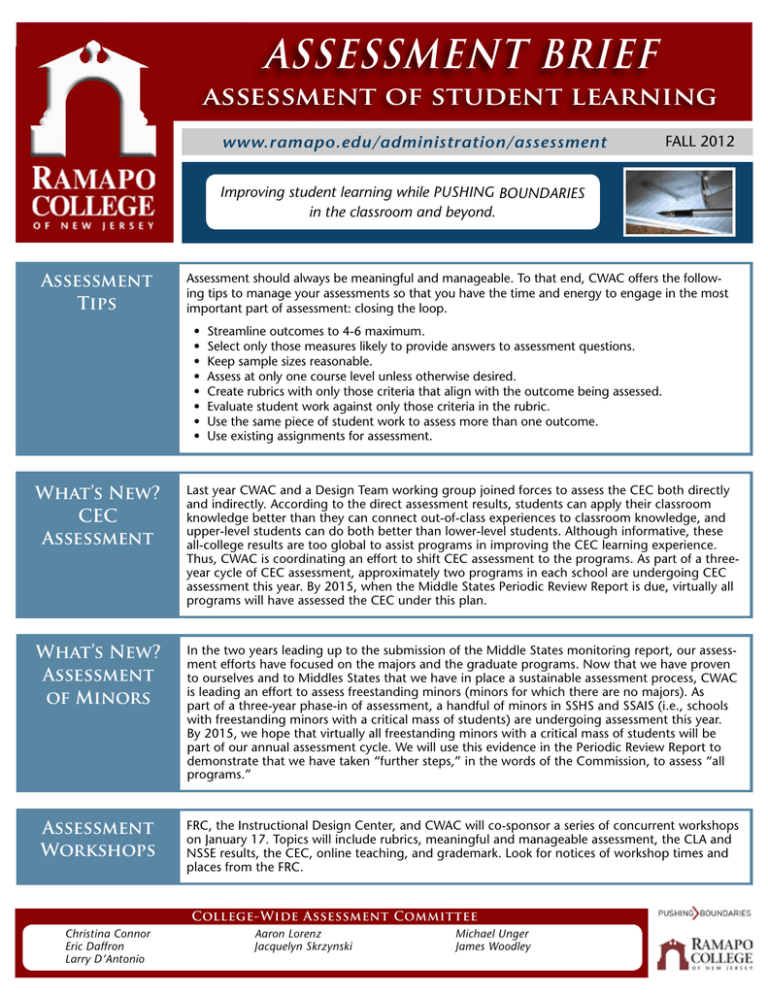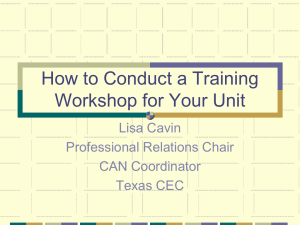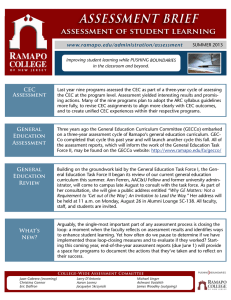ASSESSMENT BRIEF assessment of student learning Assessment www.ramapo.edu/administration/assessment
advertisement

ASSESSMENT BRIEF assessment of student learning www.ramapo.edu/administration/assessment FALL 2012 Improving student learning while PUSHING BOUNDARIES in the classroom and beyond. Assessment Tips Assessment should always be meaningful and manageable. To that end, CWAC offers the following tips to manage your assessments so that you have the time and energy to engage in the most important part of assessment: closing the loop. • • • • • • • • Streamline outcomes to 4-6 maximum. Select only those measures likely to provide answers to assessment questions. Keep sample sizes reasonable. Assess at only one course level unless otherwise desired. Create rubrics with only those criteria that align with the outcome being assessed. Evaluate student work against only those criteria in the rubric. Use the same piece of student work to assess more than one outcome. Use existing assignments for assessment. What’s New? CEC Assessment Last year CWAC and a Design Team working group joined forces to assess the CEC both directly and indirectly. According to the direct assessment results, students can apply their classroom knowledge better than they can connect out-of-class experiences to classroom knowledge, and upper-level students can do both better than lower-level students. Although informative, these all-college results are too global to assist programs in improving the CEC learning experience. Thus, CWAC is coordinating an effort to shift CEC assessment to the programs. As part of a threeyear cycle of CEC assessment, approximately two programs in each school are undergoing CEC assessment this year. By 2015, when the Middle States Periodic Review Report is due, virtually all programs will have assessed the CEC under this plan. What’s New? Assessment of Minors In the two years leading up to the submission of the Middle States monitoring report, our assessment efforts have focused on the majors and the graduate programs. Now that we have proven to ourselves and to Middles States that we have in place a sustainable assessment process, CWAC is leading an effort to assess freestanding minors (minors for which there are no majors). As part of a three-year phase-in of assessment, a handful of minors in SSHS and SSAIS (i.e., schools with freestanding minors with a critical mass of students) are undergoing assessment this year. By 2015, we hope that virtually all freestanding minors with a critical mass of students will be part of our annual assessment cycle. We will use this evidence in the Periodic Review Report to demonstrate that we have taken “further steps,” in the words of the Commission, to assess “all programs.” Assessment Workshops FRC, the Instructional Design Center, and CWAC will co-sponsor a series of concurrent workshops on January 17. Topics will include rubrics, meaningful and manageable assessment, the CLA and NSSE results, the CEC, online teaching, and grademark. Look for notices of workshop times and places from the FRC. College-Wide Assessment Committee Christina Connor Eric Daffron Larry D’Antonio Aaron Lorenz Jacquelyn Skrzynski Michael Unger James Woodley



